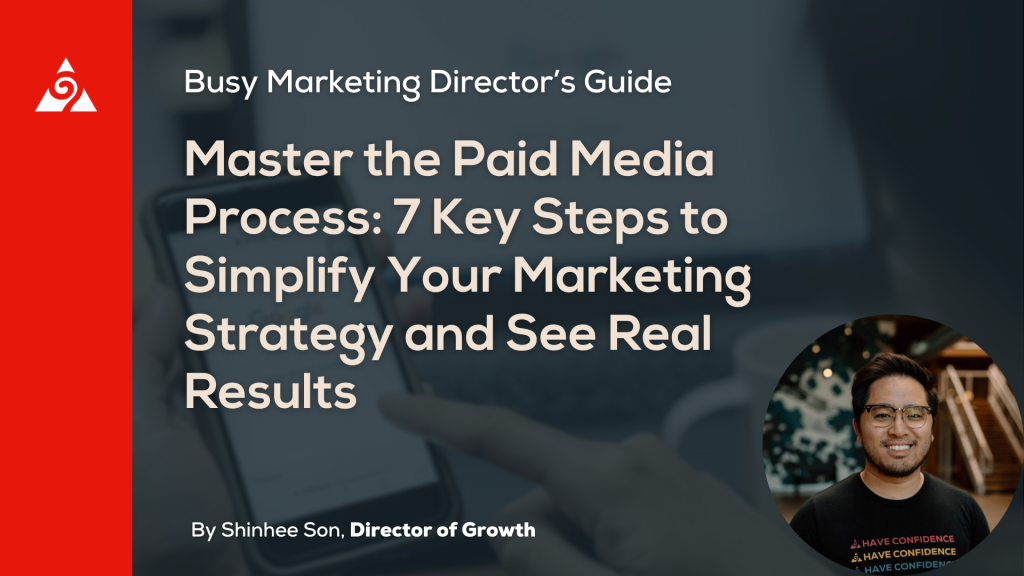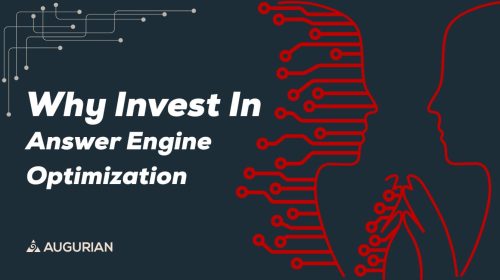Paid Media can feel really confusing, especially when you’re a marketing director with a small team. You have to deal with so many platforms, manage different campaigns, and try to make sense of all the numbers. Digital advertising plays a crucial role in reaching your target audience through various channels like search engines and social media platforms. It’s hard to know which channels to use, how to set up campaigns, and if the money you’re spending is actually worth it. Every dollar matters, but with limited time and resources, figuring out the right moves can be tough.
But here’s the thing: you don’t need to know everything about Paid Media to get good results. Instead, focus on a few important steps that make the biggest difference. This way, you can make your strategy simpler and get real results without overloading your team. In this post, we’ll cover seven key steps that will help you prioritize your efforts, use your resources wisely, and get the most out of your Paid Media strategy.
Let’s dive in and make Paid Media work better for you!
Prioritizing Your Paid Media Efforts: Where to Start
In a perfect world, you’d have a big team to handle every part of your Paid Media strategy—creating ads, managing ad campaigns, analyzing data, and more. I’ve talked about all the roles you’d need to make the most of Paid Media. But in reality, you have limited resources, so you need to make every effort count. This means being smart about where you put your focus. Instead of trying to do everything, it’s better to focus on the areas that will make the biggest difference.
Conducting a Paid Media Audit: The Quickest Way to Identify Priorities
Start with a quick paid media audit—this should be the first task for your team. Think of this audit as laying the groundwork for everything else. The goal is for your team to see where things stand right now so they can make smarter decisions going forward. Make this a top priority and have your team get started right away to keep their efforts focused and effective. Additionally, consider the role of search engine marketing in this audit process, as it encompasses both paid advertising methods and organic strategies to improve your website’s visibility in search engine results.
Steps for Your Team to Do a Simple Paid Media Audit
Encourage your team to keep the audit simple to avoid feeling overwhelmed. They should start by checking key campaigns and ad accounts. Ask them to look for quick wins—places where small changes could make a big difference. Guide them to use performance data to find opportunities that offer a high return on investment (ROI) by identifying and incorporating relevant keywords.
Focus Your Team’s Efforts After the Audit
After the audit, help your team decide which campaigns to boost and which ones to scale back. Focus on high-impact areas that match your business goals. This way, the team will use its resources wisely and focus on the work that will deliver the biggest results.
Streamlining Campaign Setup and Structure
The goal here is to keep things simple and clear by selecting the right paid media channel. Well-structured campaigns help ensure your team uses its limited resources effectively without adding any extra complexity. This is a high-priority step. After the audit, setting up and structuring campaigns the right way is key to achieving success.
Setting Goals with Limited Resources
Start by setting clear, realistic goals that match your team’s capacity. Make sure these goals align with your most immediate business needs. Focus on the campaigns that will have the most impact right away, including paid ads that can generate instant visibility and revenue.
Organizing Campaigns Efficiently
Keep campaign organization simple to avoid confusion. Use straightforward methods to set up ad groups for your search ads and choose your targets, staying within your resource limits. Follow best practices to ensure your campaigns are easy to manage.
Simplifying Google Ads Copy and Creative Development
Help your team create effective ad copy and creatives without stretching them too thin. Use templates and automation tools to make the production process easier and faster. This way, your team can produce quality content without burning out.
Focused Targeting and Audience Segmentation
Use the data you already have to focus on the most valuable audience segments through search engines. Effective targeting helps your team make a bigger impact and reduces wasted effort. This is a medium-priority task—it’s important, but your team can fine-tune it over time as more data becomes available.
Using Target Audience Insights You Already Have
Encourage your team to use internal data to cut down on the need for a lot of new research. They should focus on the audience segments that are most valuable to get the best results by understanding how these segments interact with search engine results.
Simple Segmentation Strategies
Guide your team to prioritize the audience segments that are most likely to convert. Keep targeting simple to avoid spreading their efforts too thin. This will help them stay focused and effective.
Making the Most of Custom and Lookalike Audiences
Teach your team to maximize the value of the customer data you already have. They can set up lookalike audiences to expand your reach without adding a lot of extra work. This strategy allows them to get more out of your existing resources.
Practical Budget Management and Allocation
As a marketing director, even without deep experience in Paid Media, you can guide your team to make smart budget decisions, including the use of PPC advertising. The key is to be strategic and flexible with budget allocation, focusing on channels and campaigns that provide the highest return on investment (ROI). This is a high-priority task because budget decisions affect every part of your campaign and need to be planned early.
Setting Realistic Budgets
- Prioritize Key Campaigns: Encourage your team to allocate budget to campaigns that align with your most immediate business goals. Utilize platforms like Google Ads to focus on high-impact initiatives that are more likely to deliver quick, measurable results.
- Avoid Overextending: Remind your team that it’s better to fully fund a few successful campaigns rather than spread resources too thin across many. Understanding where to allocate funds strategically can make a big difference, even without deep Paid Media expertise.
Tracking Ad Spend with Limited Oversight
- Use Simple Tools: Recommend using straightforward tools like basic spreadsheets or budget-tracking software. This helps your team easily monitor spending and make quick adjustments as needed.
- Focus on Key Metrics: Guide your team to track essential KPIs such as cost per conversion or return on ad spend (ROAS). This focus ensures that funds are being used effectively, and adjustments can be made promptly without requiring deep technical knowledge.
Growing Success Within Resource Limits
- Scale Gradually: Advise your team to slowly increase the budget on high-performing campaigns. This cautious approach allows for adjustments based on real-time data, reducing the risk of overspending.
- Monitor Closely: Encourage your team to keep a close eye on campaign performance during scaling to avoid common mistakes, like overextending resources or broadening targeting too quickly.
- Maximize Impact Without Overreach: By carefully expanding successful campaigns, your team can boost results without stretching resources too thin, balancing growth and sustainability.
Ad Creatives and Messaging with Limited Resources
When resources are tight, it’s essential to focus on high-impact creatives like video ads and messaging that require little effort but still deliver strong results. This is a medium-priority task; it’s crucial for campaign effectiveness but can be addressed after the foundational elements are in place.
Maximizing Impact with Minimal Creative Output
- Prioritize High-Impact Creatives: Focus on creative types that are known to perform well, such as strong visuals or simple, engaging videos that don’t take much time or money to produce.
- Use a Minimal Viable Creative Approach: Start with basic, minimal creatives to test what works best. Use the feedback to make quick, informed adjustments and improve over time.
Crafting Effective Messaging
- Create Compelling Messaging Quickly: Encourage your team to develop messaging that is straightforward and resonates with your target audience. Keep the process simple to save time and resources.
- Leverage Existing Content: Repurpose content you already have. Use parts of past campaigns or existing materials to streamline messaging development and maintain consistency.
Best Practices for Calls to Action (CTAs)
- Write Clear, Effective CTAs: Ensure your calls to action are simple and directly align with your campaign objectives. They should clearly tell your audience what to do next.
- Keep CTAs Consistent: Simplify your CTAs across all campaigns to maintain consistency and reinforce your message, making it easier for your audience to understand and act.
Performance Tracking and Analysis for Small Teams
For small teams, it’s important to focus on key metrics related to ad performance on the search engine results page and use automation to make tracking and analysis easier. This is a high-priority task because accurate tracking is essential for making smart decisions and should be set up before any campaigns start.
Setting Up Efficient Conversion Tracking
- Track the Right Things with Limited Resources: Focus on tracking the most important data that directly impacts your campaign goals. This way, you get useful information without overwhelming your team.
- Use Simple Tools: Choose tools that are easy to set up and don’t require a lot of upkeep. This will keep your team focused on using the data rather than setting it up.
Monitoring Key Metrics Without Overwhelm
- Focus on the Most Important Metrics: Guide your team to concentrate on the key Paid Media metrics, like conversion rates, cost per acquisition (CPA), and return on ad spend (ROAS). This helps avoid getting lost in too much data.
- Use Automated Reports: Generate reports using automated tools. This saves time and ensures your team gets accurate information without extra work.
Analyzing Data for Quick Decision-Making
- Spot Trends Quickly: Encourage your team to look for patterns and trends with simple analysis techniques. This helps them quickly understand what’s working and what isn’t.
- Make Quick, Smart Decisions: Use the data to make fast decisions that can improve results. The quicker your team can respond to what they learn, the better your campaigns will perform.
Optimization and Continuous Improvement with Lean Resources
To get the best results from your Paid Media campaigns, it’s important to focus on continuous, small improvements in both your SEO strategies and PPC ads. Making regular, small changes can lead to big gains over time. This is a medium priority task and should be a regular part of your team’s work once campaigns are running.
Simple Optimization Practices
- Focus on What Matters Most: Have your team concentrate on areas that will have the biggest impact, like adjusting bids or refining targeting. This way, they can make improvements without feeling overwhelmed.
- Make Small Changes Regularly: Encourage your team to make small, regular updates instead of big changes all at once. This keeps things manageable and helps improve performance steadily.
A/B Testing with Limited Resources
- Run Simple A/B Tests: Teach your team to run A/B tests that are easy to set up and don’t need a lot of resources. They should focus on tests that can give clear and valuable results.
- Prioritize High-Impact Tests: Have your team focus on tests that could lead to the biggest improvements. This ensures they get the most value from their efforts without using too many resources.
Scaling Successes with Limited Resources
- Build on What Works: Guide your team to expand on campaigns that are already doing well. Instead of scaling too quickly, they should slowly build on what’s working.
- Repeat Successful Strategies: Encourage your team to use successful strategies in other areas. This helps them grow Paid Media efforts over time without overloading their resources.
Recap
To manage your Paid Media campaigns well, focus on these key steps:
- Quick Audit: Start with a quick audit to find high-impact opportunities. This is a high-priority task.
- Campaign Setup and Structure: Make sure your campaigns are set up and organized to be as effective as possible.
- Targeting and Audience Segmentation: Use data to focus on the best audience segments.
- Budget Management: Be strategic about where you spend your money to get the best return on investment (ROI).
- Ad Creatives and Messaging: Create simple, high-impact ads and clear messaging without using too many resources.
- Performance Tracking: Track the most important metrics and use simple tools to keep it easy and accurate.
- Continuous Improvement: Keep making small changes to improve your campaigns over time.
Next Steps
Stay organized and help your team focus on what’s most important. Put your efforts into activities that make the biggest difference and avoid spreading your resources too thin. Remember, small, regular improvements can lead to big gains.
Start by doing a quick audit of your Paid Media efforts. Use the steps in this guide to manage your campaigns strategically and achieve better results for your business.
- Budgeting Content Marketing in 2024: How to Align Your Content Budget With Business Goals - September 9, 2024
- Budgeting Paid Media in 2024: How to Align Your Paid Media Budget With Business Goals - September 9, 2024
- Budgeting SEO in 2024: How to Align Your SEO Budget With Business Goals - September 9, 2024





